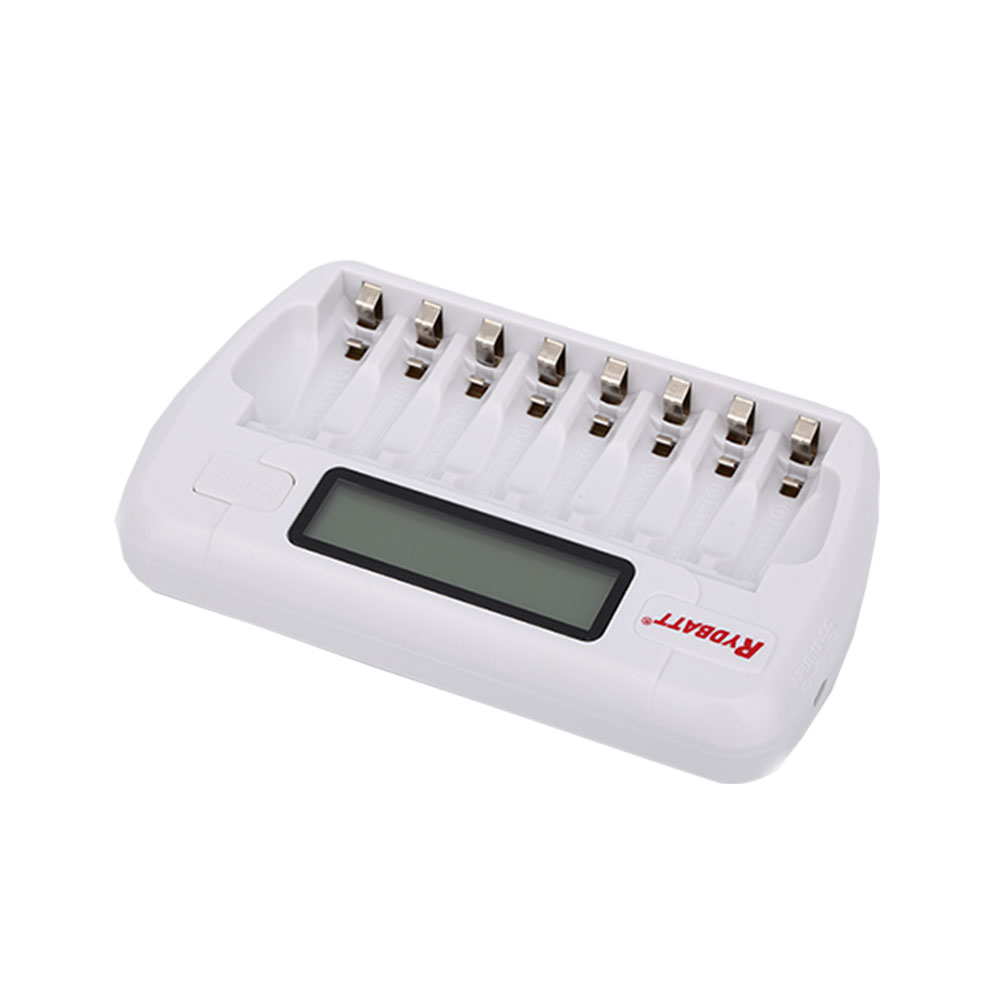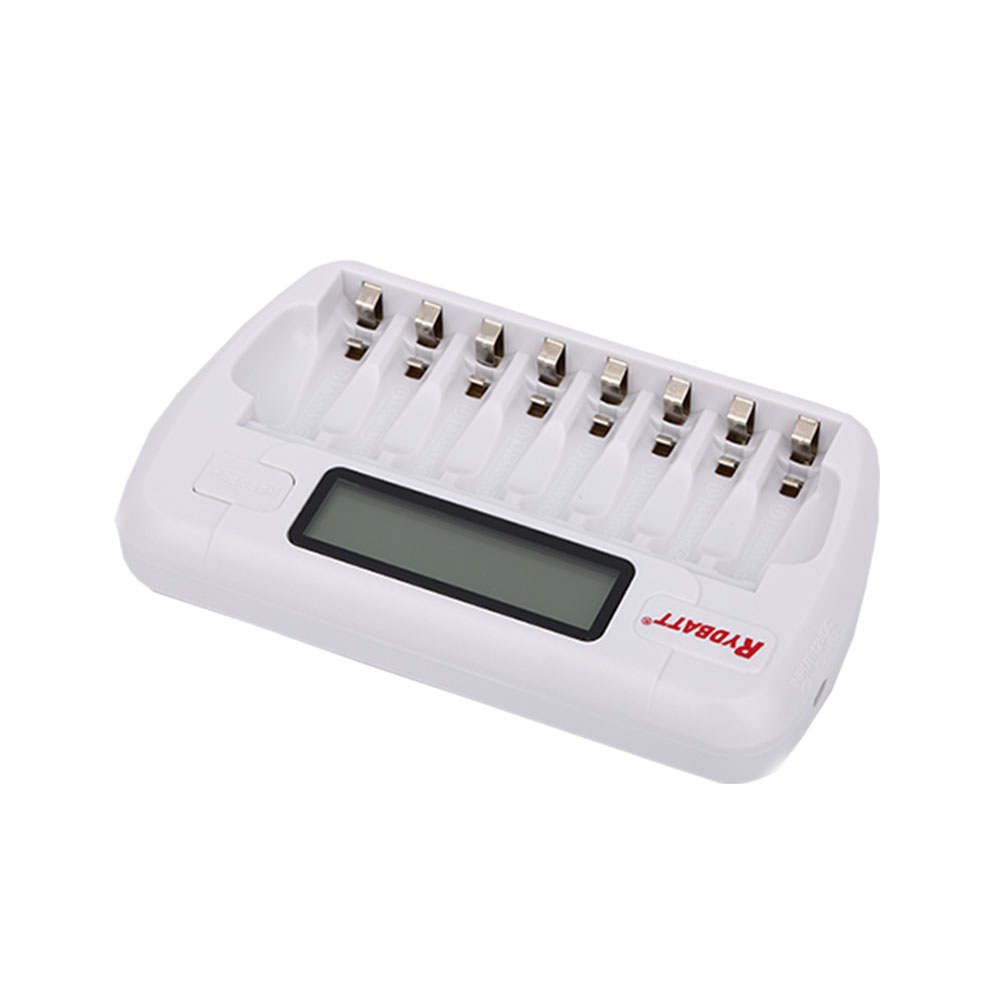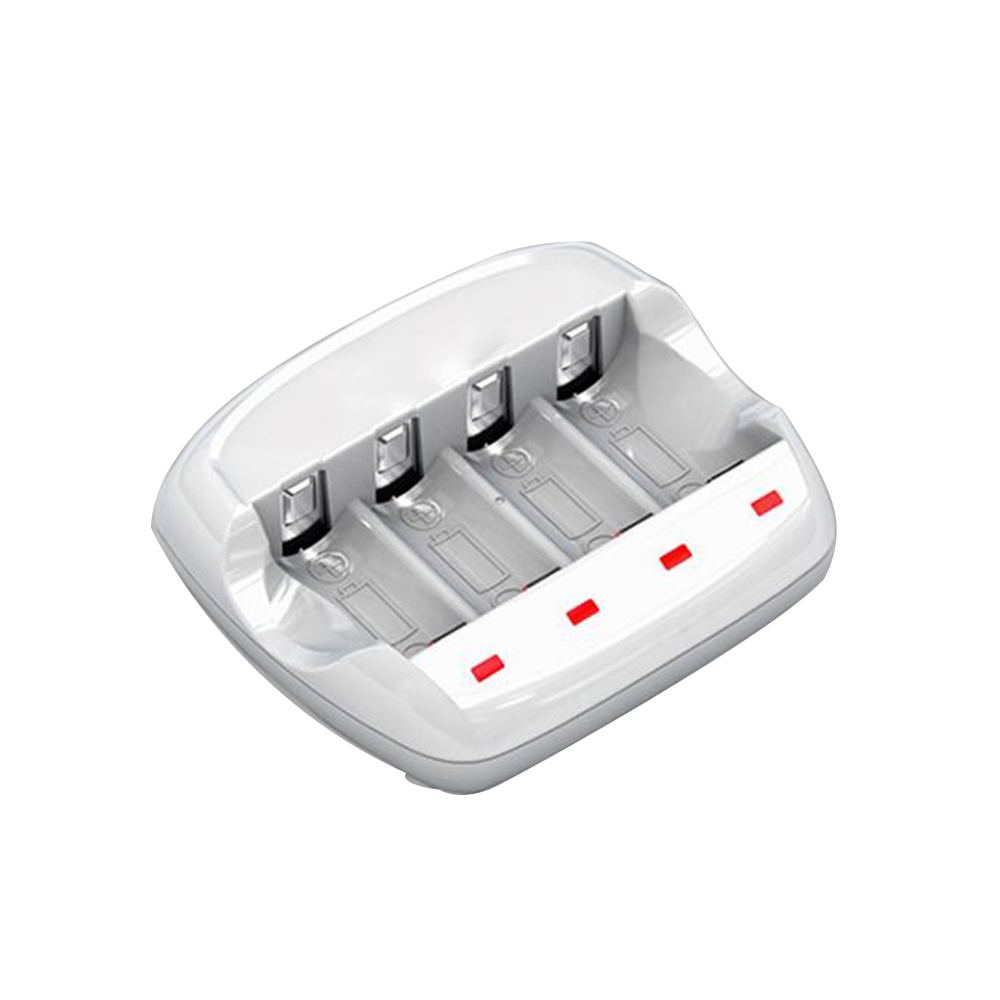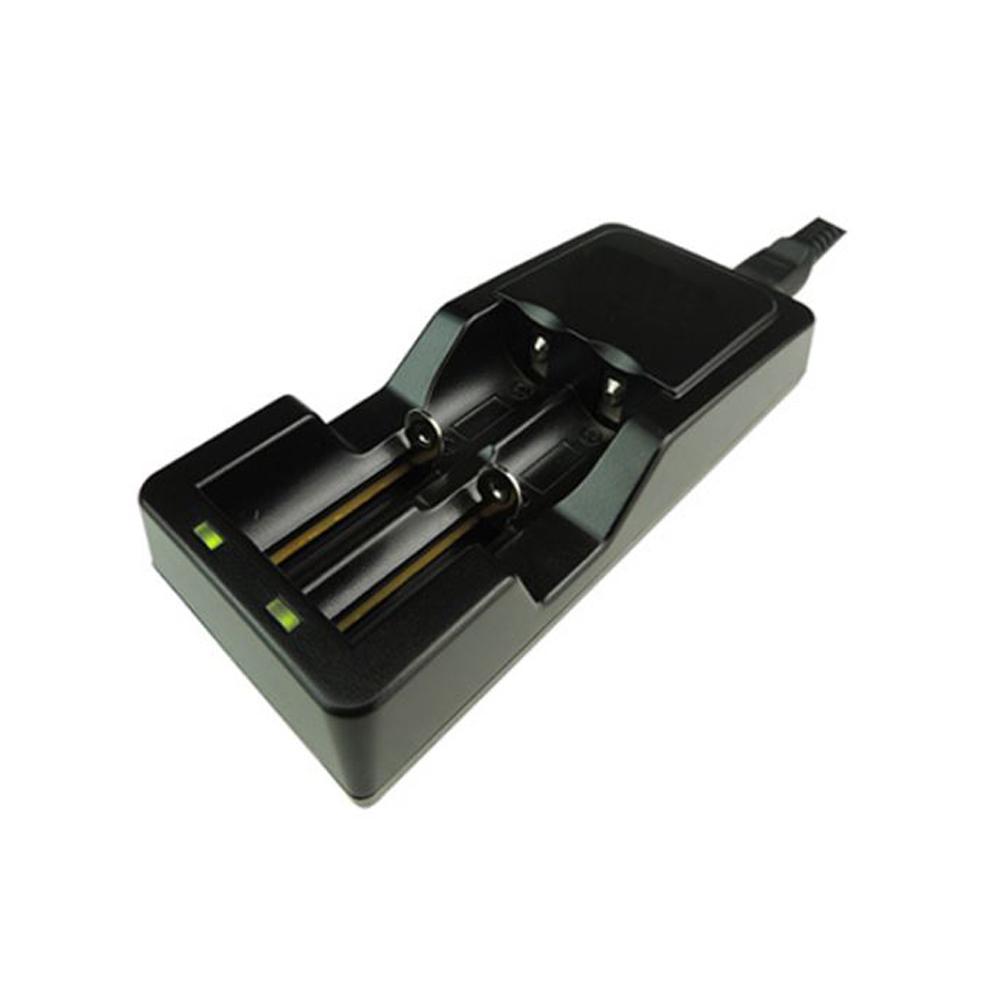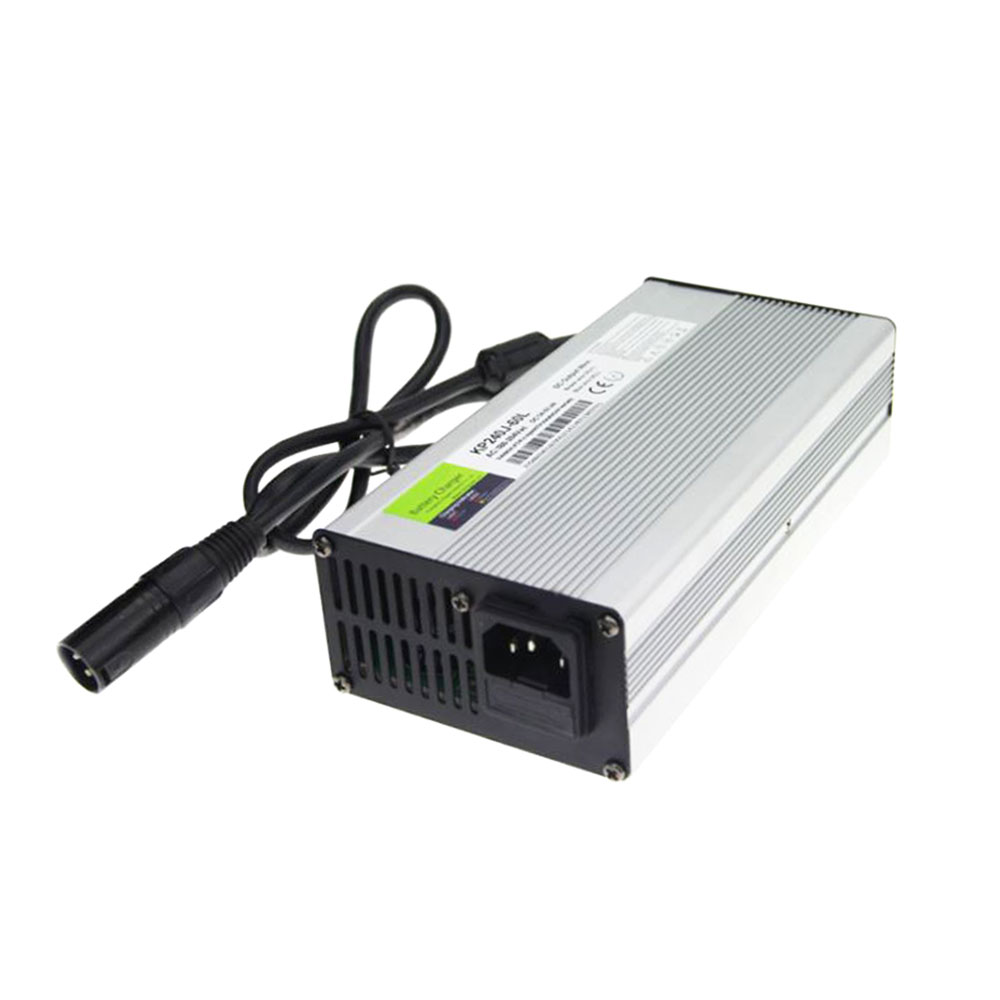Custom B2B Battery Chargers & Smart Lithium Charging Solutions by Himax Electronics
Himax Electronics: Advanced B2B Battery Chargers & Custom Lithium Charging Solutions
- Multi-Bay Smart Chargers for NiMH/NiCd: Explore our 4-Slot Rechargeable AA/AAA NiMH LCD Smart Charger and the 8-Bay Smart AA/AAA NiMH/NiCd Battery Charger. These intelligent NiMH smart chargers are ideal for businesses requiring efficient and safe charging of numerous rechargeable batteries for devices, tools, and consumer electronics, providing clear LCD feedback on charging status.
- Lithium-Ion & RCR123 Battery Chargers: We offer compact and powerful lithium-ion battery chargers, including our 4 Slot RCR123 Charger and 2 Slot Charger for Li-Ion 18650 Battery Pack. These are essential for powering high-drain devices and ensuring the longevity of your lithium-ion 18650 batteries in various industrial tools and portable equipment.
- High-Power & Custom Lithium Battery Chargers: For larger lithium battery packs, Himax provides robust solutions like our 300W Lithium Battery Charger. Furthermore, we excel in custom lithium battery pack charger manufacturing, delivering bespoke charging solutions engineered precisely to your unique voltage, current, and battery chemistry specifications, including LiFePO4 battery chargers for solar, EV, and energy storage systems.
- Smart Charging Technology: Equipped with an advanced intelligent charging system that automatically adjusts the charging current and voltage for optimal safe, efficient charging, thereby significantly extending your battery’s lifespan and protecting your investment. This smart charger technology is a cornerstone of our LiFePO4 and lithium-ion battery chargers.
- Fast Charging Efficiency: Our high-speed battery chargers support quick-charge modes to significantly reduce charging time, boosting productivity and operational readiness for critical applications.
- Wide Battery Compatibility: Himax universal battery chargers are compatible with various battery chemistries, including lead-acid batteries (AGM, Gel, Flooded), lithium batteries, and LiFePO4 batteries. This broad charger compatibility makes them perfect for electronics, cars, power tools, electric scooters, and large-scale renewable energy storage.
- Safety First (BMS Integration): Built-in multi-level safety protections against overcharging, over-discharging, short circuits, reverse polarity, and overheating ensure the utmost safety of your battery pack and equipment. Our chargers are designed to work seamlessly with battery management systems (BMS) for enhanced safety protocols.
- Durable Design: Constructed with high-quality industrial-grade materials and robust electronic components for long-lasting, stable performance in demanding industrial and commercial environments. These heavy-duty battery chargers are built to withstand continuous operation.
Partner with Himax for Custom Battery Charger Manufacturing
Himax Electronics provides specialized personalized battery charger customization services to precisely meet the unique performance and integration requirements of your devices and battery packs. Whether your business needs ultra-fast charging, specific battery chemistry compatibility (LiFePO4, Li-ion), enhanced safety features, or unique form factors, we engineer a tailored charging solution just for you. Choose Himax for efficient, secure, and bespoke battery charging technology—contact us today to discuss your custom battery charging plan and ensure your battery systems operate flawlessly and efficiently for years to come. We are your ideal OEM battery charger manufacturer.
FAQs about Smart Battery Chargers
What Is a Battery Charger and How Does It Work?
What Types of Batteries Do Himax Chargers Support?
How Do I Choose the Right Charger for My Device?
When selecting the ideal battery charger for your commercial or industrial application, crucial considerations include the specific battery type (e.g., LiFePO4, lithium-ion, lead-acid), the required voltage output, and the appropriate charging current. Himax professional chargers come with comprehensive and detailed technical specifications to assist our B2B clients in identifying the perfect match for their precise operational needs and maximizing their battery’s service life.
What Makes Himax Battery Chargers Stand Out?
Himax smart battery chargers incorporate advanced intelligent charging technology that dynamically adjusts both voltage and current automatically, ensuring supremely safe, highly efficient, and optimized charging cycles. These smart chargers are also fortified with multiple safety protections, including sophisticated overcharge and overheat safeguards, meticulously designed to significantly prolong battery life and enhance overall system reliability.
What Should I Keep in Mind When Charging a Battery?
It is paramount to always verify that the charger specifications precisely match your battery’s requirements to prevent potential issues like overcharging or undercharging, which can degrade battery performance and safety. Himax commercial battery chargers are equipped with an advanced auto-shutoff feature that intelligently terminates the charging process once the battery is fully charged, effectively preventing damage and enhancing battery longevity for continuous business operations.


